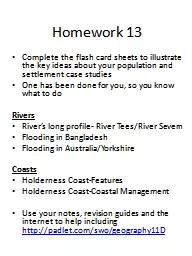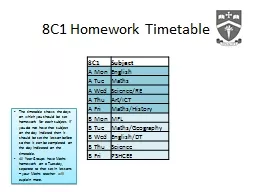PPT-Homework 13
Author : conchita-marotz | Published Date : 2017-01-11
Complete the flash card sheets to illustrate the key ideas about your population and settlement case studies One has been done for you so you know what to do Rivers
Presentation Embed Code
Download Presentation
Download Presentation The PPT/PDF document "Homework 13" is the property of its rightful owner. Permission is granted to download and print the materials on this website for personal, non-commercial use only, and to display it on your personal computer provided you do not modify the materials and that you retain all copyright notices contained in the materials. By downloading content from our website, you accept the terms of this agreement.
Homework 13: Transcript
Download Rules Of Document
"Homework 13"The content belongs to its owner. You may download and print it for personal use, without modification, and keep all copyright notices. By downloading, you agree to these terms.
Related Documents














